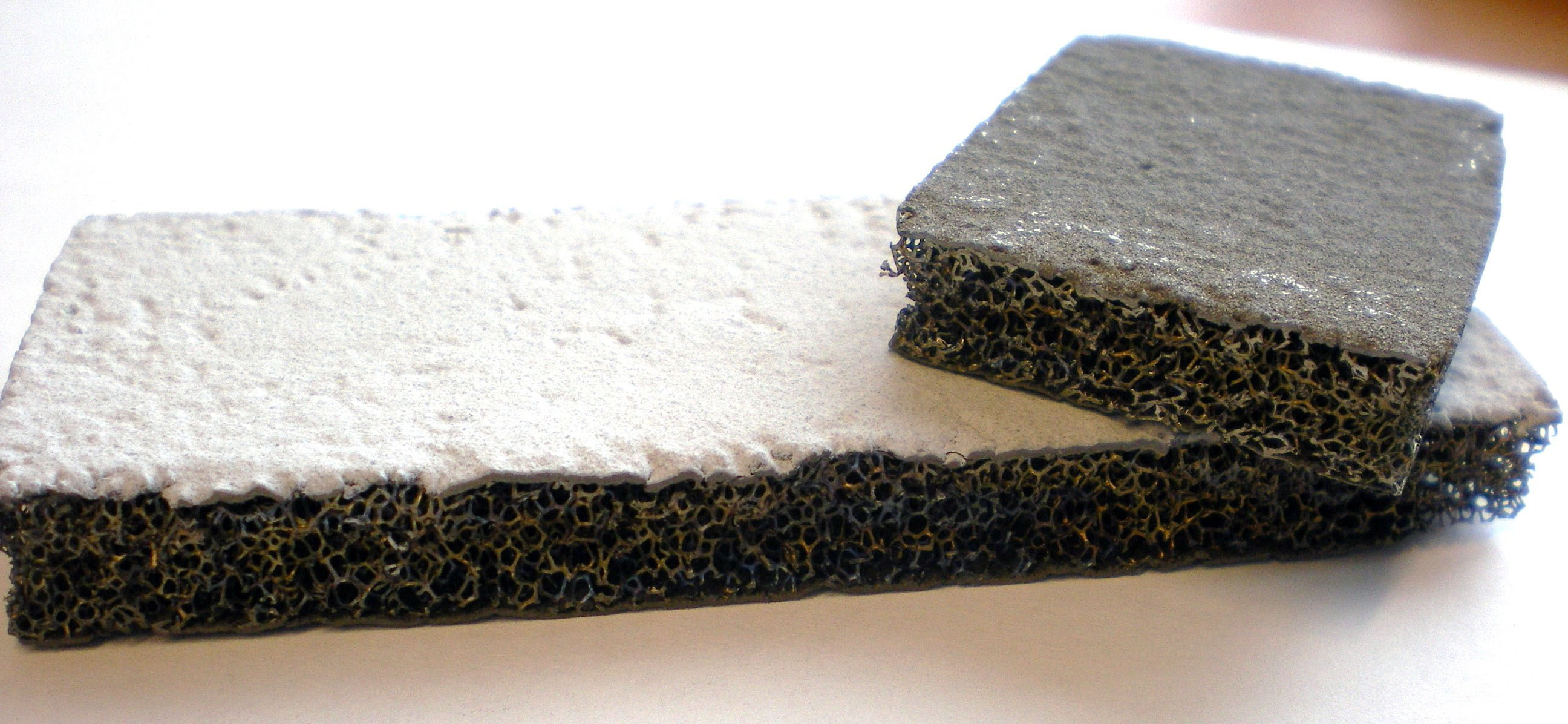Metal Foam Heat Exchangers
The Centre for Advanced Coatings Technology at the University of Toronto has developed a near-net-shape forming technology to fabricate lightweight, complex shaped, high temperature heat exchangers out of metal foams. Foams of nickel and aluminum, now commercially available, make very efficient heat exchangers since they have very large internal surface area for heat transfer. Heat exchangers are made from sandwich structures in which surface skins made of metals, ceramics, or a mixture of the two, are deposited on a metal foam core. Skins are deposited by thermal spraying, a process in which metal or ceramic wires or powders are fed into a high temperature gas jet where they melt while being sprayed onto a surface. The molten droplets coalesce and freeze upon impact, forming a dense, solid layer. Sprayed skins can be made from high-temperature alloys or ceramics, which are otherwise very difficult to shape. Cooling gas circulates through the open cell foam, eliminating the need to drill complex cooling channels.

Nickel foam with ceramic (lower sample) or metallic coating (upper sample).

10 PPI nickel foam with end caps, with the shape of a cylinder section.


